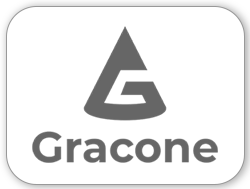
We’ve already established why traditional marketing doesn’t work with engineers. Engineers don’t want to be sold to. You need to find a way to “fly under the radar.” Engage them without overtly selling to them. So how do you do that?
By offering them free PDH activities.
Let’s first clarify what professional development is and what it is not.
A webinar, a lunchtime presentation, or an online course that educates an engineer on a topic that is pertinent to his professional practice qualifies as a professional development activity.
Showing how your widget compares favorably to your competitor’s widget is NOT professional development.
A sales pitch is NOT professional development. A tour through your product catalog is NOT professional development. An equipment demonstration is NOT professional development. Showing how your widget compares favorably to your competitor’s widget is NOT professional development.
The problem with using the guise of professional development to overtly sell to engineers is two-fold. First of all, sales pitches and product demonstrations are not acceptable for PDH credit. The state licensing boards are very clear about this. The expectation of the licensing boards is that an educational activity should be educational.
Secondly, engineers don’t want to sit through a sales presentation. They want to learn useful information that will help them in their professional practice. I’ve seen this play out time and time again.
I own and operate several continuing education businesses, including a company called Professional Development Seminars (PDS). PDS has been providing live seminars for professional engineers throughout the South and the Midwest since 1995. The format is a two-day seminar with multiple industrial manufacturers making technical presentations throughout each day.
We inform all speakers of the rules upfront. No sales pitches! But, despite our best efforts, there will invariably be one presenter who will drift off into selling mode. When that happens, we hear about it from our attendees… “I didn’t come to hear a sales pitch” or “I’m not happy about the first speaker today. He spent 15 minutes talking about his product line.”
Establishing yourself as a Subject Matter Expert goes a long way towards establishing credibility with engineers.
If you are fortunate enough to find yourself in front of a roomful of engineers, don’t sell to them! Take that golden opportunity to educate them. A webinar, seminar, or online course affords you 60 minutes of access to the engineer. That’s a full hour to demonstrate that you are a Subject Matter Expert on the topic being discussed. And establishing yourself as a Subject Matter Expert goes a long way towards establishing credibility with the engineers in the audience.
How else can you get an engineer’s undivided attention for 1 hour? With a white paper? Not likely. What about a trade show? I don’t think so. How many companies have enough people staffing the booth to allow you to slip away for a one-hour conversation with a potential client? And even if you could slip away, you’re only engaging one client at a time. Hold a lunch & learn at an engineering firm and you can reach 20 engineers, 50 engineers, or more, and have their attention for an entire hour.
Hosting a free PDH event creates “goodwill” with the engineers in the audience.
Another benefit of offering professional development activities to engineers is the “goodwill” effect, particularly if you don’t charge a fee for your PDH activity. And if you provide free sandwiches to the engineers attending a lunch and learn session, that’s even better! Consider the fact that earning PDH credits is mandatory for professional engineers. Yes, there are some engineers who would search out professional development opportunities on their own—even if there wasn’t a mandate. But, for many engineers, earning PDH credits feels like a burden—both a time burden and a cost burden. It’s sort of like paying taxes. You do it because you have to, but you don’t like it.
By hosting a free webinar or lunch & learn for PDH credits, you are at least removing the cost burden. You are doing something for the engineer without any expectation of getting something in return. You are establishing goodwill with the engineer. If you reach out to him at some point in the future, the chances are good that he’s going to feel some sort of obligation to answer your email or return your phone call. Of course, there’s no guarantee, but, who do you think is going to be more receptive to receiving your call? The engineer that attended your webinar or an engineer that you cold call from a list?
Don’t be surprised when engineers call you after a PDH event to ask you a question or seek your help with a problem they are trying to solve.
Better yet, don’t be surprised if an engineer who attends your seminar calls you. If you make good use of your time in front of the audience and you succeed at demonstrating yourself as a reliable resource, then there’s a good chance that you’ll get calls from attendees seeking your expertise. That’s your opportunity to begin a professional relationship with the engineer.
Let’s take a look at an example of how this works from the engineer’s perspective:
Sally Smith is a 35-year-old mechanical engineer who works for a small engineering firm in Birmingham, AL. Most of the firm’s work involves the design, testing, and commissioning of piping systems for industrial facilities. Sally learns about a free one-hour webinar being hosted by your company, ABC Pumps. The timing is perfect! Sally’s PE license renewal date is coming up next month and she needs a couple more hours of professional development credits.
The title of the webinar is Pump Suction Piping Design for Low NPSH Applications. Sally is quite knowledgeable about pumps and piping systems, but she hasn’t really had to deal with any difficult NPSH issues. Most of the systems that he has designed contained water. The vapor pressure of water at ambient temperature is really low (only about 0.2 psia), so pump cavitation has never been a big problem for her in a water system. She figures it will be an interesting topic, so she signs up for the webinar.
The day of the presentation arrives, and Sally connects to the webinar at 11:50 a.m. As she waits for the presentation to start, she slowly unwraps her Subway sandwich bag. Her eyes scroll down the image on his computer screen. There’s a name and photo of the presenter on the screen. Tom Walts, Senior Pump Engineer – ABC Pump Company.
Just then, Sally hears a pleasant voice say, “We’re ready to begin.” As Sally devours her sandwich, she learns all about the mysterious concept of Net Positive Suction Head (NPSH). She learns how insufficient NPSH at the pump suction flange can result in cavitation, decreased performance, and premature pump failure. She learns that NPSH problems are prevalent when pumping fluids that have a high vapor pressure. She learns pump suction piping best practices that can help mitigate problems in low NPSH applications. At the end of the webinar, Sally makes a mental note of the presenter’s name, Tom Walts. She thinks to herself, “That guy really knows his stuff!” Sally crumples her sandwich bag and throws it away. Then, she gets back to work.
The next morning, Sally receives an email with a link to download her free 1 PDH certificate of completion. She skims the email and sees a nice photo of Tom standing next to a huge centrifugal pump, along with an invitation from Tom to “call me anytime you have a question or need help solving a pump problem.” Then, she clicks the link and prints his certificate.
A few weeks later, Sally’s boss calls her into his office. “Good morning, Sally. The partners have decided that we need to diversify our client base. We’re going to start pursuing some oil & gas work. I want you to take a look at this Request for Proposal. We’re going to put in a bid on the engineering services to design a module for an offshore oil platform containing separators, wet oil tanks, pumps, and the associated piping and control systems.”
Sally takes the RFP package back to her office. With a tinge of anticipation, she removes the binder clip and starts thumbing through the stack of papers. She thinks to herself, “This is going to be fun. After working on water systems now for close to seven years, it will be great to dive into something different.” As she flips through the pages, she comes across a data sheet containing all the pertinent data on the wet oil pumps. “Wow. The vapor pressure of the oil is 14.7 psia. I’ve got an NSPH problem to deal with here.”
Sally reaches for her keyboard and types “NPSH centrifugal pumps” into Google. As she scrolls through several articles, she suddenly has a flashback to the webinar she attended some time back. She thinks to herself, “What was the name of that guy who did the webinar presentation on low NSPH applications?” Sally quickly types “NPSH” into the search box in his email inbox. She finds an email with the subject line “Webinar – Pump Suction Piping Design for Low NSPH Applications” and she clicks on the email. She picks up the phone and dials the contact number listed in the email… “Hi, Tom. My name is Sally Smith. You probably don’t remember me, but I attended your webinar presentation a couple of months ago.”
Do you see how this works? Are you starting to understand the power of marketing this way? Tom doesn’t try to sell pumps to Sally or anybody else in the webinar. He doesn’t need to. Besides, the engineers attending the webinar would be turned off by that approach. All Tom needs to do is to educate and gain credibility with the audience by demonstrating his knowledge of pumps and piping systems. The next time an engineer in the audience, such as Sally, runs into a problem or has a technical question related to the topic, she’s going to think of Tom.
One final thought: You might be tempted to leave your engineer behind, and to let the marketing people host the webinar. Resist the urge. You need to put your best foot forward. You need a Subject Matter Expert running the presentation who knows the topic and speaks the language of engineering. Not to disparage other professions, but if you put a marketing guy or a business guy in front of a group of engineers, they are going to see right through him. The last thing you need representing your brand is a guy who stumbles every time an engineer asks a technical question.
Is it a state board requirement that the presenter be an engineer? From the standpoint of awarding PDH credits, the answer is “no.” It’s not a requirement. As far as establishing credibility with the audience, you can get by with a non-engineer. If you have a seasoned non-engineer salesperson who can talk the talk and walk the walk in a room full of engineers, then, by all means, let him do the presentation. But he must be able to answer technical questions that come up in the presentation. One good approach is to have two presenters on hand. If the non-engineer has better oratory skills, then use him to run the presentation, but have an engineer there who can jump in to answer the difficult technical questions.

